The principle of operation of the heater with infrared radiation
One of the effective sources of additional heating are infrared heaters. The principle of their work is based on infrared rays, which provide a quick and high-quality temperature increase in any part of your apartment.
Content
Action scheme
Today, more and more people prefer infrared heaters. From the usual electric convectors they are distinguished by the fact that they do not heat the air in the room, but solid surfaces (floors, walls) and objects, and they, in turn, pour heat into the surrounding space. So quietly warming up the whole room.
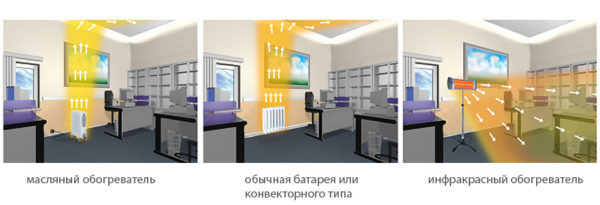
Infrared waves are long waves, which means that they are freely absorbed even in a heavily blown and cold room.The heating itself occurs quickly, immediately after switching on the device. This speed is due to the fact that the flow of infrared rays will be directed in a certain zone, that is where the heating will take place. That is, being in one part of the room and setting the direction of the convector in that direction, you immediately feel warm with your whole body, while the whole room is not yet properly heated. This is another important advantage of an infrared heater over other types of devices of the same purpose. So, to "get started", oil radiators and convectors need at least half an hour.
Device design
To understand how this appliance works, and what is the basic principle of action, you need to have an idea about its components. The body, as a rule, is made of steel, and powder paint is applied to the surface. Inside it there is a reflector made of aluminum, to which a heating element is attached. So the infrared heater looks like on a heat lamp or panel, inside which a beam of infrared radiation is collected. They operate independently of the direction of the air and the speed of movement of warm and cold air masses.
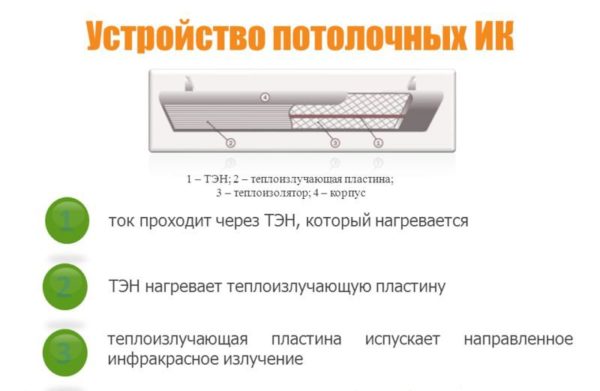
The principle of operation of an infrared heater is similar to the action of the sun on the atmosphere.The sun's rays also penetrate the surface, which in turn absorbs heat.
Types of infrared heaters
Devices are classified by the type of heating element:
- gas;
- electrical;
- water.
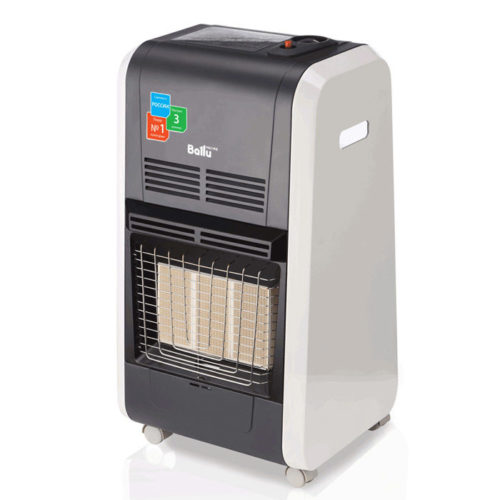
In terms of heating infrared heaters are:
- Longwave - can be used in homes, office rooms, industrial premises.
- Medium wave. It is desirable that the ceiling height reaches three meters or more.
- Shortwave - it is not recommended to use them at home, since short waves have the strongest radiation. Best of all, if this type of heating devices will be used in a spacious industrial workshop, barn, high-ceilinged hall, on the street.
Which model is better to choose
To decide which particular device is right for you, you should carefully study its characteristics, capabilities and control system. It all depends on the area of the heated room, the operating conditions and the goals that you intend to achieve. For example, where exactly the device will be placed, will it have to be dragged to another room or installed permanently?
Thus, portable heaters are smaller in size, but at the same time they are able to heat a much smaller area than their stationary counterparts.
There are wall, ceiling and baseboards infrared.
The most convenient solution, especially for owners of small apartments, will be ceiling option placement of the heater. It does not require a lot of space, it can be mounted directly into a suspended ceiling, or it can be attached to a regular ceiling with the help of brackets.
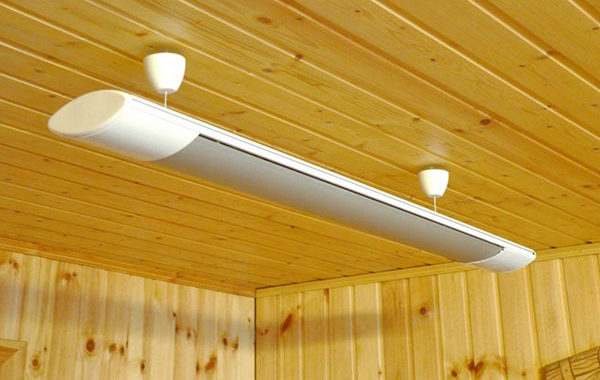
Heater can be installed on the floor. Outdoor electrical appliances less effective in comparison with the ceiling, because the radiation flux will not be directed directly, and heating will become more complicated.
Best of all, if inside such a device will carbon heating element - it is much safer and safer than, for example, ceramic.
The carbon heating element is a tube made of quartz. Inside it is a vacuum space with a carbon helix. When the heater is operated with a carbon tube, a characteristic reddish glow arises, which is not very pleasant to the eyes. Ceramic element - less quality, but does not glow during operation.A halogen may even have a negative impact on the human body due to too short radiated waves.
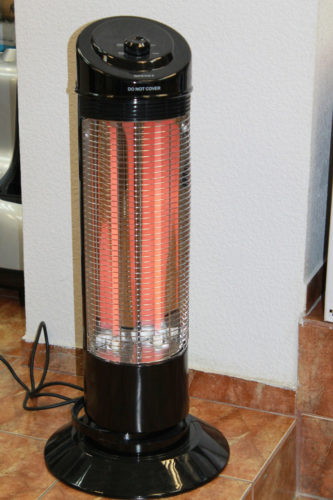
Recommendations when buying an infrared heater
Before you decide on the choice of instrument, ask how thick the anodizing layer on the plate, generating a stream of infrared rays. This parameter determines the longevity of the instrument. With a thickness of at least 25 microns, the heater is considered reliable. If the layer is thinner, then, most likely, your purchase will not last long - such devices fail in 2-3 years.
Be sure to find out the type of heating element. Avoid halogen heaters, which are like lamps, emit a golden glow and can adversely affect health.
Think about what room you need to heat with the help of this unit. Heaters are very different from each other in power. 1000 W is enough for a room of 10 square meters, but it is better to take a heater with a margin. After all, a lot of heat is absorbed by walls, horizontal surfaces, windows, floors.
Mobile infrared heaters sometimes have a power of 300-500 watts.They are designed to be used in different rooms. If you periodically work in a garage, basement, small office, which is not fully heated, then such a portable type of heater will be an effective solution to the problem.

/rating_off.png)












